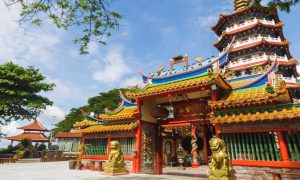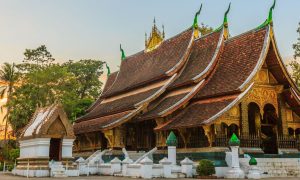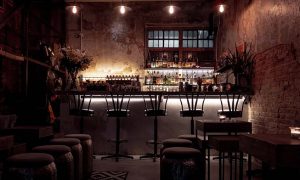YUNNAN PROVINCE IS CHINA’S BEST KEPT SECRET, AND DAVID BOWDEN EXPLORED THE HIGH-ALTITUDE TOWNS OF THIS PICTURESQUE LANDSCAPE.
My flight to Lijiang in China’s Yunnan Province necessitated a stop over in Kunming and, like most passengers do between flights, I wandered aimlessly around the rather industrial airport transit lounge. A sign at one of the souvenir counters captured my attention: oxygen was on sale for Y45. There was no obvious answer to why oxygen was on sale, and thoughts of this passed into the dark recesses of my brain until I later stepped onto the snow fields of Jade Dragon Snow Mountain at 4,600m above sea level on the outskirts of Lijiang. As I gasped for oxygen, I saw tourists on the snowfields breathing from aerosol cans and soon discovered that these contained oxygen.
Mountainous Yunnan is punctuated by snow-capped mountains, and one soon appreciates that the air is more rarified and thus physical exertion becomes more of a chore than at sea level. I was told to take it easy for a day or so until I became acclimatised, and was grateful that I’d chosen to start my holiday in Shangri-La in Lijiang at a mere 2,400m, working my way up as the holiday unfolded.
GATEWAY TO SHANGRI-LA
Lijiang is located in the remoteness of Yunnan Province in southwest China. While it was once considered a forgotten kingdom, it has now been “discovered” by tourism, yet thankfully retains a strong connection to its heritage.
Historic buildings can be found all around the heart of this UNESCO-protected World Heritage Site. Lijiang is the capital of the Naxi ethnic minority and home to their Dongba religion. Central Lijiang is a maze of narrow streets and wooden shop lots, but the city that tourists now admire isn’t as it once was; much of it was destroyed in an earthquake in 1996. Small streams with clear water flow through the town and trees cast shade over the narrow streets lined with cafés, bars, shops, and restaurants. The central square, with its colourful waterwheel, is where most tourists start exploring the Dayan ancient city.
Every night, party-goers descend upon Pub Street to join in the fun at one or more of many lively pubs. The entertainment is distinctly Chinese, but the joys of drinking and having a good night out have universal appeal.
Situated on the outskirts of town, ShuHe Town is considered by many to be a better-preserved historic village than Dayan. While Dayan is older, visiting both is the best option, as each has its own unique character. ShuHe is less popular and frequented more by local shoppers, and many of the shopkeepers are still engaged in trades that date back several centuries.
IMPRESSIVE LIJIANG
Also on the outskirts of Lijiang is the cultural extravaganza called Impression Lijiang; a one-hour long, multi-cast showcase of the local Naxi, Bai,and Yi people. Unlike other cultural performances, this is done outdoors with the towering Jade Dragon Snow Mountain as a backdrop. While it rained when I was there and the mountain wasn’t visible, I saw photos of the view when the weather was clear and it was most impressive.
The show is directed by Zhang Yimou, who was responsible for the spectacular opening to the Beijing Olympics. With over 500 performers and teams of horses, the show is spectacular for its choregraphy, co-ordination, and sheer scale.
Most visitors ride the cable car to 4,600m up the mountainside to enjoy the year-round snow cover, but golfers will not want to miss the Jade Dragon Snow Mountain Golf Club (www.ljxsgolf.com) at the base of the mountain; it’s the longest golf course in the world at 8,548m from the championship tees.
HEAVEN ON EARTH
The city elders of Diqing realized, a few years ago, the benefits of marketing Diqing as Shangri-La. Both names refer to the same place, but there is a huge difference in telling your friends in the coffeeshop that you are off to Shangri-La for the weekend rather than Diqing. With its high-altitude location, snow-capped mountains, the burgundy and golden robes of Buddhist monks, and yaks roaming the grassy plains, Diqing is as close to heaven on earth as many tourists will encounter in their travels. While tourists don’t flock here yet, one gets the impression that the crowds will come once the word gets out. The old town is lined with old wooden and stone buildings, while the newer parts of town do little to recommend modern day Chinese urban planning. Fortunately, visitors only pass through the latter from the airport to the old town and onto retreats like the MGallery Songtsam.
Wandering through the old town, heading off on mountain trails, souvenir hunting, posing for photos with yaks, and seeking spiritual enlightenment at one of several temples are on the must-do list of most visitors. I found the MGallery so relaxing that I really didn’t want to exert myself, especially in the rarefied air. Admiring the impressive Songtsam Lama Monastery – the largest Tibetan Lama monastery outside Tibet – from my balcony seemed more than adequate exercise for the day.
A visit to Pudacuo National Park is highly recommended, especially if it coincides with the vivid autumnal colours of the foliage. My timing was perfect, and the walk around the pristine lake was as inspirational as Shangri-La itself.
ICONIC HOTELS
The recently opened Pullman Lijiang Resort and Spa is an expansive property of no more than two-storeys high with architecture that’s sympathetic to its historical surroundings. Of the 150 rooms and villas, 76 are spacious villas that cater to high-end local and international guests.
The MGallery Songtsam has a spiritual air about it, although this is probably due to the ornate monastery situated in front of the resort. At an altitude of over 3,300m, the resort isn’t only closer to heaven, there is also a sense of serenity that gives this mountaintop retreat karma befitting the ancient Song Zan Lin Si Temple located in town.
SHANGRI-LA
While James Hilton’s 1933 novel Lost Horizon was a fictitious piece of writing, the Himalayan retreat of Shangri-La portrayed in it could well have been in Yunnan, China. Many people have an image that Shangri-La is some perfect hideaway surrounded by snow-capped mountains, where spiritual leaders seek divine governance, and those who believe in this romantic notion won’t be disappointed should they venture to Yunnan. Just don’t forget to stock up on oxygen at Kunming Airport.
———————————————————————————————————
GETTING THERE:
AirAsia (www.airasia.com) has three daily flights from Kuala Lumpur to Guangzhou’s international airport. From here, transfer onto China Southern Airline (www.csair.com) for flights to Lijiang and return flights from Diqing to Guangzhou.
WHERE TO STAY:
The Pullman Lijiang Resort and Spa (www.pullman-lijiang.com) is a luxurious resort situated close to ShuHe ancient city in historic Lijiang. In Diqing, the MGallery Songtsam Retreat (www.mgallery.com) is a tranquil escape close to an historic Tibetan temple known as the “Little Potala Palace”. Spend some time in Guangzhou on the way home and enjoy the luxurious accommodation at the Sofitel Guangzhou Sunrich Hotel (www.sofitel.com).
This article was written by David Bowden for The Expat magazine.
Source: The Expat September 2012
Register for free on ExpatGoMalaysia.com
















